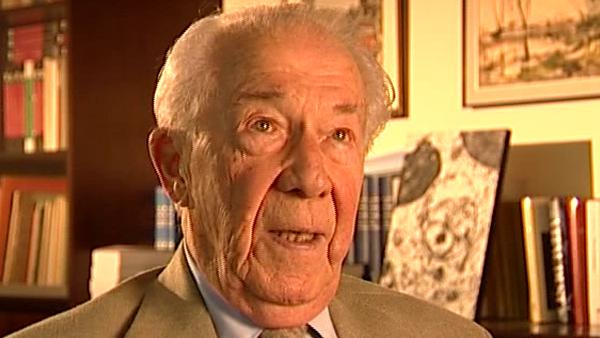NEXT STORY

Jacques Berthet and Miklós Müller
RELATED STORIES

NEXT STORY

Jacques Berthet and Miklós Müller
RELATED STORIES


|
Views | Duration | |
|---|---|---|---|
| 51. The first lysosomal storage disease | 126 | 04:29 | |
| 52. Dame Honor B Fell and vitamin A | 79 | 03:49 | |
| 53. 'Pericanalicular dense bodies' | 99 | 02:55 | |
| 54. Alex Novikoff | 196 | 05:25 | |
| 55. Uricase: Not a typical enzyme | 109 | 02:31 | |
| 56. Peroxisomes | 1 | 162 | 05:20 |
| 57. Becoming weary of teaching and administrative duties | 131 | 03:59 | |
| 58. Joining the Rockefeller Institute | 100 | 02:59 | |
| 59. A dual life between New York and Louvain | 121 | 04:01 | |
| 60. Jacques Berthet and Miklós Müller | 169 | 05:16 |


Well, this temporary arrangement turned out to be permanent and so, starting in 1962, I had two research groups, two research laboratories: one my old laboratory in Louvain and the other one, the new lab that turned out to be... ended up being quite large, a whole floor in a new building there, in New York, and how it worked out... Well, you better ask my wife and my children, but they certainly paid a price for this dual life of mine, because at the age of my children it was not possible for the whole family to accompany me; it would have been too expensive anyway. My wife did come with me from time to time but always for very relatively short stays so that we could leave the children with friends or leave them in the house with a person to take care of them, and so I was absent from home quite a lot and I'm sure the family paid a price for that. But they are not too unhappy today, so I'm trying not to feel too guilty about it. Scientifically I can only say it was a tremendous success because the lab in New York turned out to be extremely productive; I was able to recruit another group of people, graduate students, post docs, and we managed to keep the two labs... I managed to keep the two labs working and successfully working, thanks to the fact that I had such wonderful co-workers in Belgium, and I haven't said enough about them. I haven’t said enough... I have mentioned Géry Hers largely, but Géry Hers... he never came to New York – he was doing his own thing and he was being extremely successful in his work on carbohydrate metabolism, making important discoveries, even after he discovered lysosomal diseases, and so he had his own group, a big group, and... But besides Hers I had Jacques Berthet, who I mentioned in the beginning, Robert Wattiaux, Henri Beaufay, Pierre Baudhuin, Pierre Jacques, André Trouet, Gilbert Vaes – all Belgians, and most of them spent at least a year with me in New York. So every year I had one of my Belgium seniors to come over in New York and to take care of the New York lab while I was coming back to Belgium to do my teaching, because I did... still did a small amount of teaching, and to take care of the Belgian lab. And so together with these people I was able to run those two labs quite successfully. In fact, the two labs... let us say they collaborated very much on techniques but didn't compete on subjects; they worked on parallel subjects, mostly using the same techniques, the same approaches, and I think one very important achievement of those days was the development of new and better techniques and instruments for the fractionation of cells and tissues. We were... and in this I was very much helped by Berthet, Jacques Berthet, and especially Henri Beaufay.
Belgian biochemist Christian de Duve (1917-2013) was best known for his work on understanding and categorising subcellular organelles. He won the Nobel Prize in Physiology or Medicine in 1974 for his joint discovery of lysosomes, the subcellular organelles that digest macromolecules and deal with ingested bacteria.
Title: A dual life between New York and Louvain
Listeners: Peter Newmark
Peter Newmark has recently retired as Editorial Director of BioMed Central Ltd, the Open Access journal publisher. He obtained a D. Phil. from Oxford University and was originally a research biochemist at St Bartholomew's Hospital Medical School in London, but left research to become Biology Editor and then Deputy Editor of the journal Nature. He then became Managing Director of Current Biology Ltd, where he started a series of Current Opinion journals, and was founding Editor of the journal Current Biology. Subsequently he was Editorial Director for Elsevier Science London, before joining BioMed Central Ltd.
Tags: 1962, New York, Géry Hers, Robert Wattiaux, Henri Beaufay, Pierre Baudhuin, Pierre Jacques, André Trouet, Gilbert Vaes
Duration: 4 minutes, 1 second
Date story recorded: September 2005
Date story went live: 24 January 2008